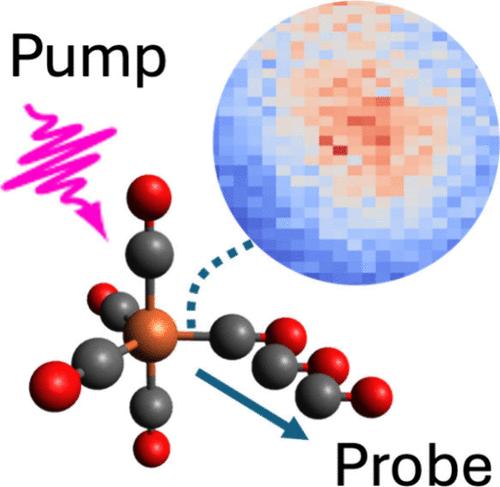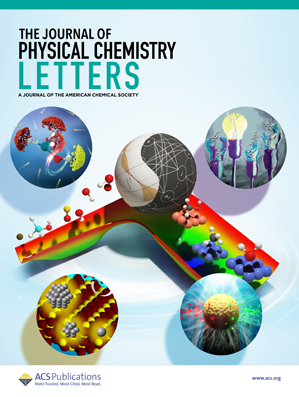Different Photodissociation Mechanisms in Fe(CO)5 and Cr(CO)6 Evidenced with Femtosecond Valence Photoelectron Spectroscopy and Excited-State Molecular Dynamics Simulations
IF 4.8
2区 化学
Q2 CHEMISTRY, PHYSICAL
引用次数: 0
Abstract
Measured and calculated time-resolved photoelectron spectra and excited-state molecular dynamics simulations of photoexcited gas-phase molecules Fe(CO)5 and Cr(CO)6 are presented. Samples were excited with 266 nm pump pulses and probed with 23 eV photons from a femtosecond high-order harmonic generation source. Photoelectron intensities are seen to blue-shift as a function of time from binding energies characteristic of bound electronic excited states via dissociated-state energies toward the energies of the dissociated species for both Fe(CO)5 and Cr(CO)6, but differences are apparent. The excited-state and dissociation dynamics are found to be faster in Cr(CO)6 because the repopulation from bound excited to dissociative excited states is faster. This may be due to stronger coupling between bound and dissociative states in Cr(CO)6, a notion supported by the observation that the manifolds of bound and dissociative states overlap in a narrow energy range in this system.

用飞秒价态光电子能谱和激发态分子动力学模拟证明 Fe(CO)5 和 Cr(CO)6 的不同光解离机制
本文介绍了光激发气相分子 Fe(CO)5 和 Cr(CO)6 的测量和计算时间分辨光电子能谱以及激发态分子动力学模拟。样品由 266 nm 泵脉冲激发,并由飞秒高阶谐波发生源发出的 23 eV 光子进行探测。对于 Fe(CO)5 和 Cr(CO)6,光电子强度随时间从结合电子激发态特有的结合能通过解离态能量向解离物种的能量蓝移,但两者之间存在明显差异。研究发现,Cr(CO)6 中的激发态和解离动态更快,因为从结合激发态到解离激发态的再填充速度更快。这可能是由于在 Cr(CO)6 中束缚态和解离态之间的耦合更强,在该体系中束缚态和解离态的流形在较窄的能量范围内重叠的观察结果也支持这一观点。
本文章由计算机程序翻译,如有差异,请以英文原文为准。
求助全文
约1分钟内获得全文
求助全文
来源期刊

The Journal of Physical Chemistry Letters
CHEMISTRY, PHYSICAL-NANOSCIENCE & NANOTECHNOLOGY
CiteScore
9.60
自引率
7.00%
发文量
1519
审稿时长
1.6 months
期刊介绍:
The Journal of Physical Chemistry (JPC) Letters is devoted to reporting new and original experimental and theoretical basic research of interest to physical chemists, biophysical chemists, chemical physicists, physicists, material scientists, and engineers. An important criterion for acceptance is that the paper reports a significant scientific advance and/or physical insight such that rapid publication is essential. Two issues of JPC Letters are published each month.
 求助内容:
求助内容: 应助结果提醒方式:
应助结果提醒方式:


